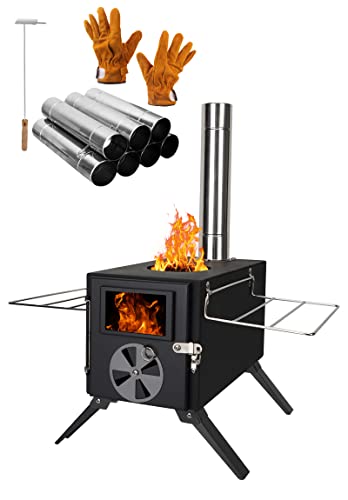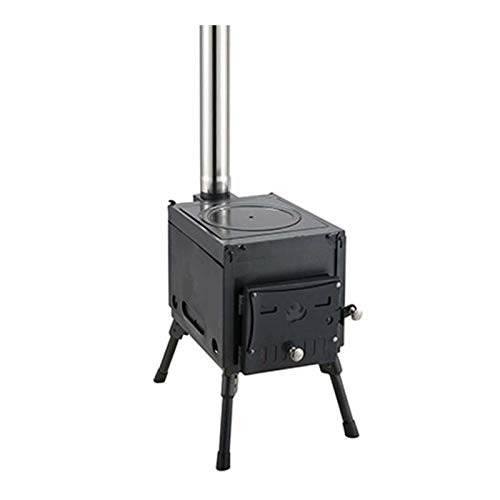Why No One Cares About Wood Burning Fire
페이지 정보
작성자 Juana 작성일 25-02-08 22:40 조회 2 댓글 0본문
 The Dangers of a Wood Burning Fire
The Dangers of a Wood Burning FireA wood-burning fire can provide a cozy and relaxing experience. It can also release toxic combustion by-products. It is important to understand how wood burns, and how to properly use your fireplace.
Choose mature logs or Kiln dried logs. Logs that are seasoned hold less moisture and can burn hotter and longer than unseasoned logs.
Burning Time
The burning of wood is an effective and traditional method of heating. The fire can release pollutants both indoors and outdoors which are harmful to the human body. A well-designed fireplace can reduce the negative impacts of burning wood.
The length of time a wood fire lasts depends on the degree of heat. The temperature of the wood fire will affect the amount of smoke that is produced and the amount of carbon monoxide released. Carbon monoxide can make it difficult for occupants to escape a building that is burning when the levels are too high. To avoid this, it is essential to keep the fire at an unheated level.
During the initial phase of a fire, volatile gases like methane and alcohol are released from the wood's cellulose. These gases are combustible as well as non-combustible, based on the moisture level and pyrolysis temperatures of the sample. The temperature of pyrolysis can rise to around 325 degrees Celsius. At this point cellulose starts to break down, creating coal and tar. This process is known as wood pyrolysis.
In addition to the volatile gases, burning wood releases a myriad of toxic combustion products, like dioxins and polyaromatic hydrocarbons (PAHs). PAHs are known to cause cancer and other illnesses in animals and humans. They also can contaminate soil and water. To minimize the effects of PAHs, wood should be burned in a well ventilated space.
A wood stove that has an extended burn capacity can maintain visible flames while using a minimal amount of multi fuel wood burner. This method of burning involves laying the wood with light firewood and heavier logs to stop the fire from burning out too fast. This method can be used for an open fire to generate high temperatures, either over night or when you're working.
The duration of the fire is determined by various factors, like the moisture content of the wood. Dry wood will have a slower burning time than damp wood. The surface's absorptivity influences the time it takes to burn. Simms [59] observed that the required heat flux to ignite mahogany and oak samples was significantly lower with coated surfaces than without them.
Temperature
The temperature of the fire is very important. The temperature of a flame can influence how quickly it burns and also the amount of heat it generates. It also influences the risk to get burned. It also affects how much smoke is produced. Smoke can irritate eyes and throats, so it's best to avoid breathing it in.
When wood burns, it releases plenty of heat and can reach high temperatures. The temperature of the fire will be affected by the type of wood and the moisture content. For instance wet wood will have less heat than dry wood. Wet wood absorbs more water and therefore produces less heat. It is essential to use dry wood, and you should also make sure that the wood is well-seasoned prior to burning it.
When the wood reaches its maximum burning temperature, it will release a lot of heat and ash. The amount of ash that is released will depend on the type of wood that is being burned and how hot it burns. Certain woods like oak and larch produce very small amounts of ash. The birch tree can produce a lot of Ash.
As the wood is burned, it will go through the pyrolysis process in three stages. This process starts with an chemical reaction that transforms the organic compounds present in the wood into methane and carbon dioxide. The gas produced is absorbed into the air. When the contemporary wood burning stoves is heated, these gases will rise and ignite the surface of the wood and create an ember that heats it up until it combusts.
It is essential to avoid touching the wood burning fire with skin that is not completely covered, because it can cause burns. It is also essential to avoid touching the wood burning fire with skin that is not covered as it could cause burns. You can lower the risk of burns by wearing a pair of gloves and working in a well-ventilated space. It is also recommended to wear a mask when working with a wood burning fire to avoid inhaling smoke.
Smoke
Smoke from wood burning fires is, a mixture of gases and fine particles (also known as particulate matter or PM) that are harmful air pollutant. PM from wood combustion can contain harmful organic compounds, such as formaldehyde and benzene, and mineral particles like calcium, magnesium, and Outdoor Wood Fire Stove potassium. The presence of these particles may lead to a range of health problems, including respiratory and cardiovascular diseases and cancer. Inhaling wood smoke can also cause people to breathe CO, an odorless, colorless gas that can be deadly in micro small wood burning stove for shed doses.
The smoke produced from wood fires is mostly due to volatile organic compounds (hydrocarbons) which evaporate from the burning material. The smoke also contains water vapor, a byproduct of incomplete combustion (such as creosote) as well as a small percentage of unburned ash.
It is recommended to use seasoned wood in your fireplace or stove. Logs that are split and stored out of the weather and allowed to dry until they are matured (a moisture content of 20-25 percent) will burn more slowly and produce less creosote. A good way to check the moisture content of a log is to knock it on both sides. Damp wood will have an uninteresting sound, whereas mature logs will produce an edgy sound.
The smoke and other byproducts are released through the chimney. If the ventilation system in the home is inadequate, the chimney could be not able to draw enough air and cause a back draft. This can cause the byproducts of the fire to accumulate within the home. This could lead to an accumulation of carbon monoxide, as well in flammable creosote and cinders.
Smoke from wood-burning fires could be especially hazardous to older people, those who suffer from lung or heart diseases as well as children and outdoor wood fire stove avids. They are more susceptible to experiencing adverse health effects from smoke from wildfires including COVID-19-related symptoms, as well as aggravated asthma and chronic lung and heart ailments.
Safety
There are a few steps you can take using a fire that is wood-burning to reduce the risk. Always make use of an electric fireplace or wood stove screen and keep everything flammable at 3 feet from the fire. Additionally you should have smoke detectors and carbon monoxide in your home, which will inform you when any hazardous gases are detected. You should never leave a fire unattended because even a small flame can cause an explosive explosion. You should also only make use of a ash bucket made of metal and shovel to remove the ashes from your wood stove or fireplace. Keep the ash away from anything that could ignite.
Lighting the Fire
To start a fire, lay a layer of dry and cleft logs on an ash-covered bed. Then add a layer twigs and kindling on top of the pile. Make sure there's enough space between each piece of wood to allow air circulation, as this will prevent the fire from dying too quickly. Add a few firelighters for extra assistance to get your fire up and running.
It's also a good idea to crack open a window when you're starting your fire, because this will help the fire get the oxygen it needs to be able to burn brightly. This is especially crucial for modern homes that are usually sealed tightly and have no natural airflow or drafts.
Once the fire has established, you can add more wood pieces. But, it is important to remember that even the most seasoned hardwoods such as oak and hickory produce lots of creosote when they are burned so you should try to avoid burning them as much as you can.
 It is recommended to make use of seasoned or kiln dried firewood for burning your fire, since it is less likely to create creosote in your chimney system. If you have to use green or newly cut firewood, you must be extremely cautious as it will produce more smoke and can cause more creosote.
It is recommended to make use of seasoned or kiln dried firewood for burning your fire, since it is less likely to create creosote in your chimney system. If you have to use green or newly cut firewood, you must be extremely cautious as it will produce more smoke and can cause more creosote.- 이전글 20 Trailblazers Lead The Way In Buy A80 Driving License
- 다음글 Why We Enjoy Cheap Couches For Sale (And You Should Also!)
댓글목록 0
등록된 댓글이 없습니다.






